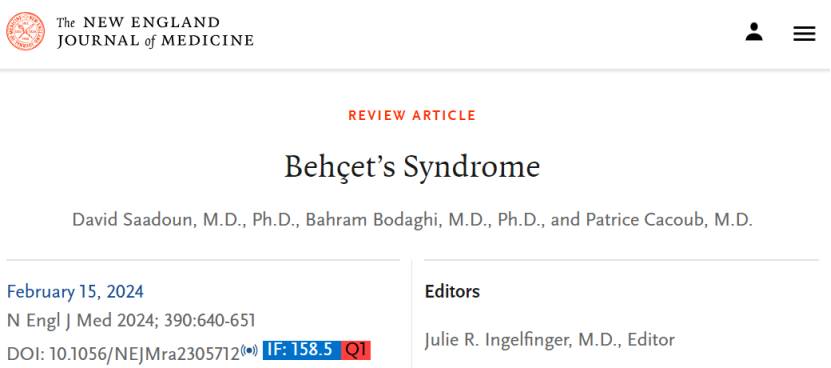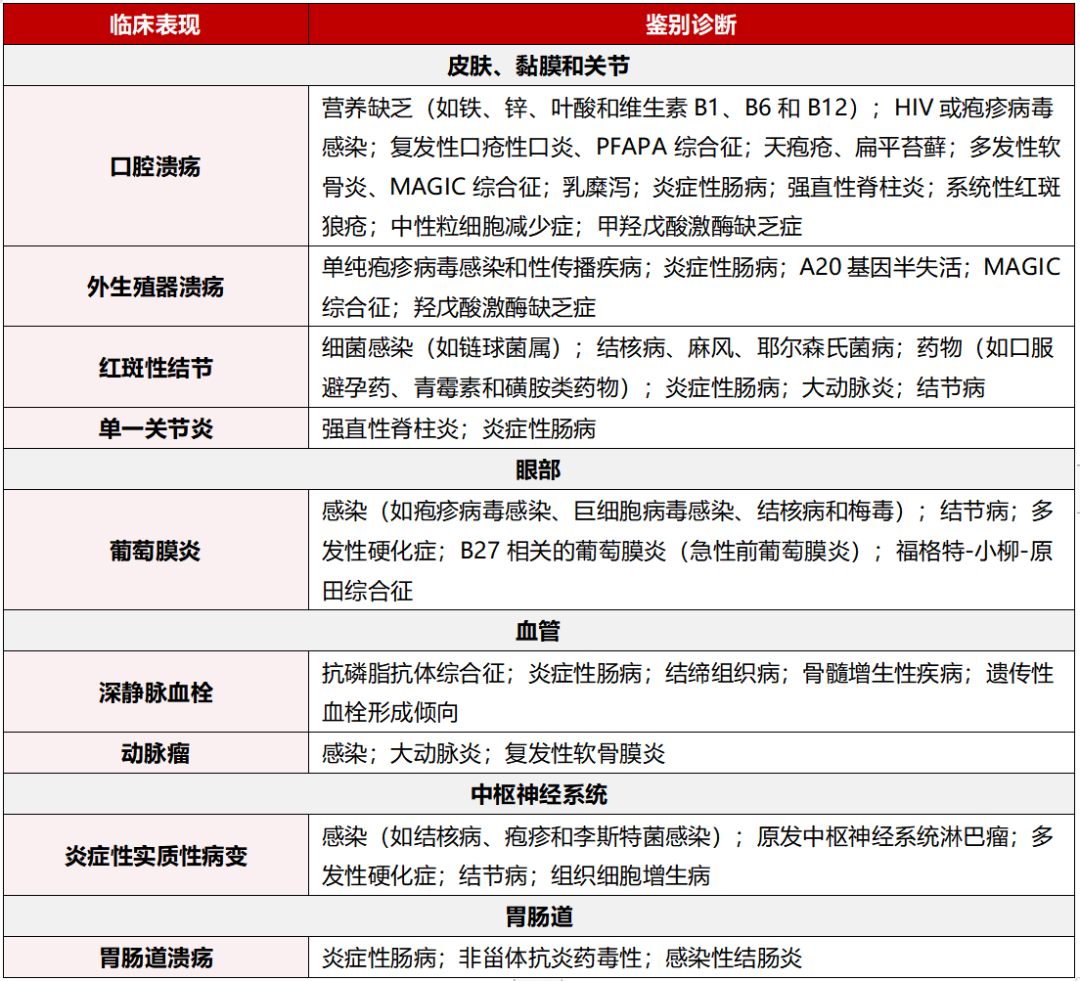
 风湿消息
风湿消息
从诊断、鉴别诊断到治疗,NEJM前沿白塞病解读来了!

新英格兰最新综述:精读白塞病最前沿诊疗要点!
撰文丨NINA

白塞病分布具有显著地域性与家族性
外因+内因,共同构建白塞病发病机制

临床表现异质性强,鉴别诊断主要可分6类



个体化+多学科结合,靶向免疫抑制或可带来新希望
皮肤、黏膜和关节受累
眼部受累
血管受累
神经系统受累
消化系统受累
小结

长按识别二维码
无需下载
精彩资讯等你来
责任编辑:芋子
版权所有 © 北京大学人民医院风湿免疫研究所
技术支持:优河马











